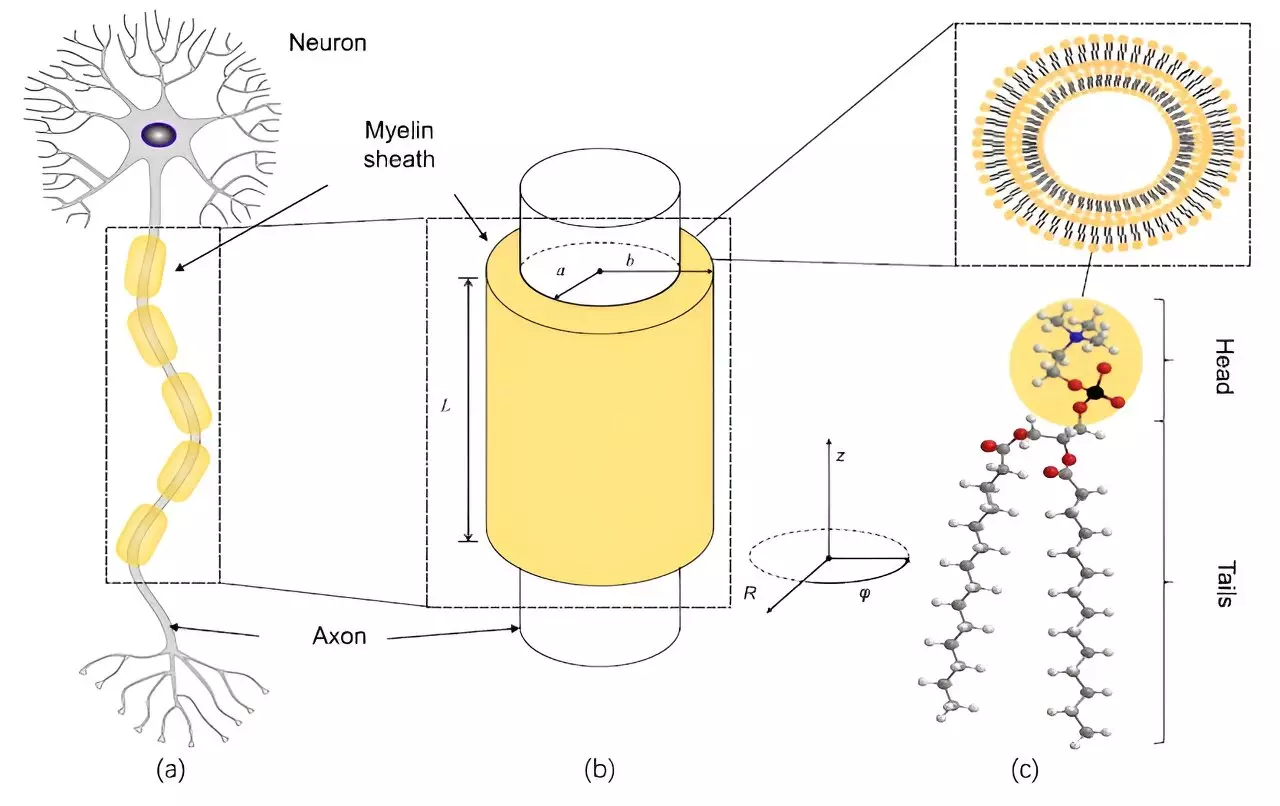The quest to understand consciousness remains one of the most daunting challenges in scientific inquiry. Despite significant advancements in neuroscience, the mechanism by which neural synchronization occurs—allowing diverse cognitive functions and experiences to emerge—continues to elude researchers. In a groundbreaking study published in *Physical Review E*, a group of scientists in China proposes a novel explanation that intertwines the principles of quantum mechanics with the physiological activity of neurons. This innovative theory postulates that quantum entanglement of photons within the myelin sheath surrounding nerve fibers could facilitate rapid communication between neurons, potentially enabling synchronizations that exceed traditional understanding.
Neurons, the fundamental units of the nervous system, communicate through synapses that transmit electrical signals. The speed of these signals is crucial, and traditionally, it has been assumed that they propagate at rates below the speed of sound in the given medium, leading to questions about how the brain achieves the rapid synchronizations observed in complex behaviors and cognitive processes. The myelin sheath, a fatty insulating layer that encases axons, is vital for the effective transmission of these signals. Recent inquiries into the properties of myelin suggest it may also play a role in enhancing neuron interactions.
However, the challenge lies in decoding the apparent disconnect between the relatively slow speed of electrical impulses and the remarkable agility of conscious thought and perception. This new research delves into the possibility that entangled photons could bridge this gap.
The researchers led by Professor Yong-Cong Chen propose that within the axonal and myelin structure, entangled photons could be generated, potentially serving as a mechanism for instantaneous communication between neurons. Quantum entanglement—a phenomenon where particles become interconnected in such a way that the measurement or alteration of one instantaneously affects the other—poses an intriguing solution to the speed limitations of classical neuronal signaling.
The study involves a complex interplay of quantum theory and biochemical processes. Specifically, during energy cycles that release infrared photons from carbon-hydrogen bonds in lipids (the building blocks of myelin), the subsequent interactions may lead to the production of highly entangled photons. By applying cavity quantum electrohydrodynamics within the myelin sheath’s structure, the researchers modeled the electromagnetic conditions that could enhance the entanglement of these photons.
The research team treated the myelin sheath as a perfect cylindrical cavity, quantifying the electromagnetic fields and the interplay of photons within this cavity. Employing sophisticated formulations developed from classical entropy, they successfully calculated the degree of photon entanglement in this novel system. Their findings indicate that under certain conditions, photons within myelin have a significantly higher probability of remaining entangled than those existing independently.
This entanglement suggests that a signal generated in one area of the nervous system could impact other segments instantly—providing a potential mechanism for the rapid neuron synchronization observed in cognitive functions such as decision-making and sensory processing.
While the results are compelling, they do not directly claim a causal link between quantum entanglement and the phenomenon of consciousness itself. Instead, the researchers, including Chen, emphasize their focus on uncovering possible mechanisms that contribute to neural synchronization. Nonetheless, this study opens the door to speculative insights about how elementary quantum processes could be integral to some of the most complex processes of the human brain.
Understanding these mechanisms might not only reveal the intricacies of conscious experience but may also challenge our foundational views on the separation between quantum physics and biological systems. If entanglement can indeed facilitate faster neural communication, it may redefine neurobiological frameworks and inspire innovative approaches to both neuroscience and quantum theories.
The synthesis of quantum mechanics with neuroscience presents a fascinating frontier for scientific exploration. While the proposal that quantum entanglement enhances communication within the nervous system is still in nascent stages, the implications of such ideas are far-reaching. Investigating these phenomena could bridge significant gaps in our understanding of consciousness and perhaps even lay the groundwork for future technologies that harness the principles of quantum mechanics for advancements in artificial intelligence, neuroprosthetics, and beyond. The potential to uncover the underlying forces shaping consciousness highlights the importance of interdisciplinary research and the continuing quest to decipher the enigmas of the human mind.

